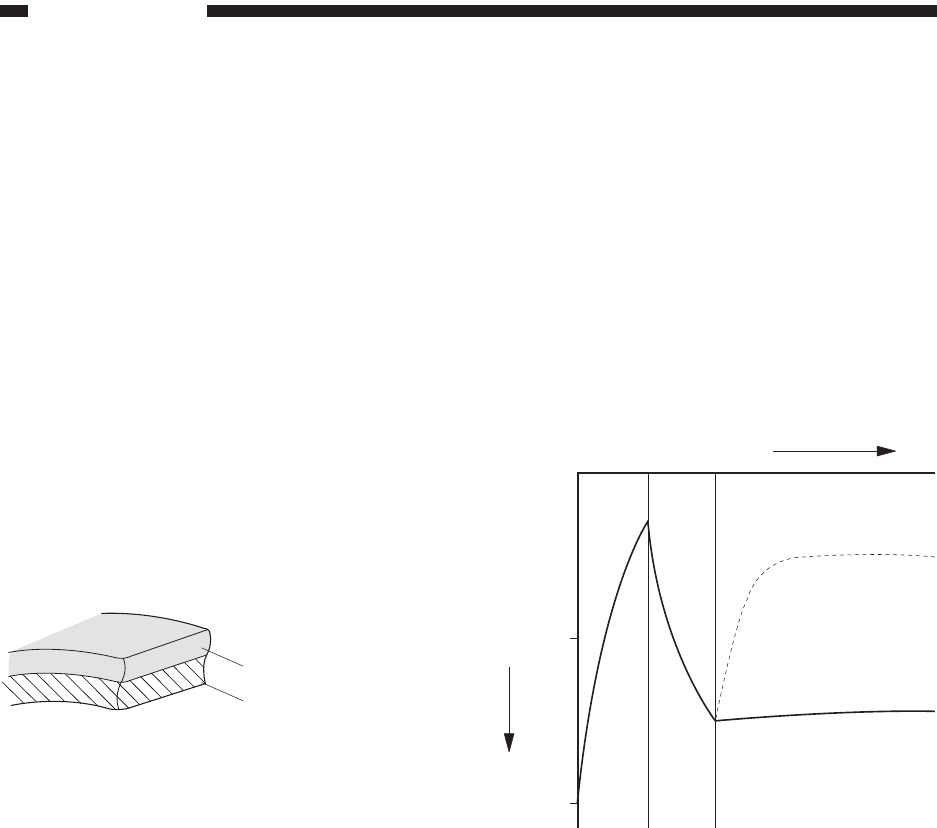
2–2
COPYING PROCESS
COPYRIGHT © 1998 CANON INC. CANON NP6621 REV.0 FEB. 1998 PRINTED IN JAPAN (IMPRIME AU JAPON)
The copier forms images through the following
steps, and each of the steps functions as described
below.
step 1 pre-exposure
step 2 primary charging (negative DC)
step 3 image exposure
step 4 development (AC and negative DC bias)
step 5 transfer (negative DC)
step 6 separation (curvature + static eliminator)
step 7 fixing
step 8 drum cleaning
The photosensitive drum consists of a
photoconducting layer on the outside and an alumi-
num base on the inside; the photoconducting layer
is made of organic photoconductor (OPC), and the
aluminum conductor is a photoconductor.
Figure 2-103
B. Latent Static Image
Formation Block
The block consists of three steps; at the end of
the block, areas of the drum corresponding to the
black areas of the original are left with negative
charges and the areas of the drum corresponding to
the white areas of the original are rid of negative
charges.
The images formed on the drum by the pres-
ence and absence of negative charges are not
visible to the human eye and, therefore, the term
latent static
images.
Figure 2-104
Surface potential (V)
Time (t)
Light area
Dark area
-500
-1000
Pre-ex
posure
(step1)
Primary
corona
charg
ing
(step 2)
Image exposure
(step 3)
Photo conducting layer
Base


















